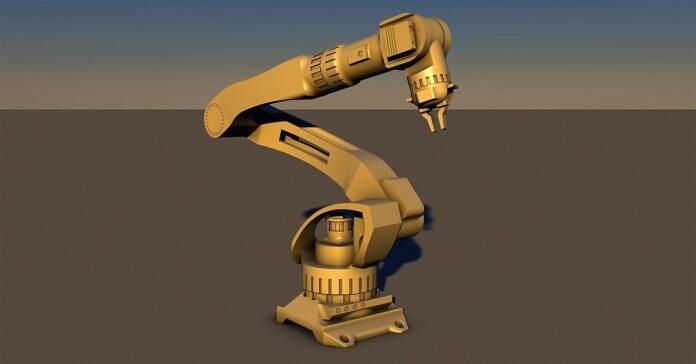In the rapidly evolving realm of robotics and automation, two terms have emerged as focal points of discussion robots and cobots. While both offer transformative potential across various industries, their functionalities, designs, and applications are distinct. Traditionally, robots have been synonymous with automated machines capable of replacing human tasks, especially in environments that demanded speed, repetition, or hazardous conditions. They’ve epitomized the zenith of manufacturing efficiency.
Table of Contents
Cobots, or collaborative robots, on the other hand, are a more recent innovation. Rather than replacing humans, they’re designed to work alongside them, supplementing human capabilities and ensuring a seamless interaction. As industries strive for higher efficiency and productivity, understanding the robot vs cobot dichotomy becomes essential. This article delves deep into their differences, similarities, and the myriad of applications they find relevance in.
1. Defining the Machines
Robots
Robots, which have made their mark in a variety of industries, are machines specifically designed to operate autonomously once programmed. Their origin dates back to the mid-20th century when they began transforming manufacturing floors. Robots excel in performing repetitive, high-speed, and heavy tasks without fatigue. They’ve been integral in applications ranging from car manufacturing to hazardous missions like deep-sea exploration or space probes. However, they often work in isolation from humans due to safety concerns.
Also read: Different Types Of Robotic Arms And When To Use Them
Cobots (Collaborative Robots)
Emerging more recently, cobots represent a paradigm shift in robotic design. Unlike their conventional counterparts, cobots are built to work harmoniously alongside humans. They encompass safety features ensuring that even accidental contact won’t cause harm. Often smaller and more adaptable, cobots can learn from humans and adapt to various tasks without extensive reprogramming. Their design prioritizes intuitive interfaces, allowing even those unfamiliar with robotics to interact and guide them.
Also read: Major difference between robotics and mechatronics
2. Key Differences
Safety Protocols
Industrial robots, with their powerful motors and rapid movements, require protective barriers or isolated environments to avoid human injuries. Safety mechanisms, such as emergency stops or defined movement areas, are essential. In contrast, cobots integrate advanced safety features. Their sensors can detect human presence, and they automatically limit their force, reducing the risk of injury. This makes cobots particularly suited for shared workspaces.
Also read: How Can a Robot Differentiate Between Positive or Negative Product Reviews?
Ease of Use
Traditional robots demand specialized expertise. Their programming can be complex, requiring an understanding of specific languages or software. Cobots, on the other hand, cater to the modern demand for user-friendly tech. They often come with touch-screen interfaces, graphical programming environments, or even the ability to teach them by manually moving their arms to desired positions. This ease of use democratizes robotics, allowing even small businesses without tech expertise to harness their potential.
Task Flexibility
Robots are known for precision and consistency, making them ideal for specialized tasks. Once set up for a particular function, altering their task can be time-consuming. Cobots offer dynamic flexibility. Their collaborative nature means they can assist in various roles, adapting to changes in real-time, making them apt for environments where tasks vary frequently.
Also read: Robot End Effector : Understanding the Types and Applications
3. Shared Traits
Task Automation
The primary goal of both robots and cobots is automation. Whether it’s tasks deemed dangerous for humans, like handling hazardous materials (robots), or repetitive tasks, such as screwing in parts on an assembly line (cobots), both serve to enhance productivity and reduce human labor in repetitive or intricate tasks. This applies in various industries, where Automation Cloud solutions are becoming increasingly crucial for streamlining operations and achieving efficiency.
Adaptability
Though robots and cobots differ in ease of reprogramming, both exhibit adaptability. With the right tools and programming, they can be repurposed for a range of tasks. This adaptability is further enhanced with advancements in AI and machine learning, where machines can learn and optimize their operations over time.
Technological Integration
Today’s robots and cobots don’t operate in isolation. They’re often integrated into broader systems, utilizing sensors, cameras, and advanced computing for better efficiency. Their operations can be augmented with AI-driven predictive maintenance, real-time data analytics, and cloud connectivity, paving the way for smart factories and Industry 4.0.
4. Practical Applications
Industrial Manufacturing
While robots have long dominated this sector, doing heavy lifting or precision welding, cobots are finding their niche. They can be seen aiding workers in intricate tasks like electronic assembly, product inspection, or even paint jobs, bridging the gap between human craftsmanship and automated precision.
Healthcare
Robots have revolutionized surgeries with devices like the da Vinci Surgical System, offering precision beyond human capabilities. Cobots, however, are making strides in patient care – helping in rehabilitation exercises, ensuring correct medication dosages, or even supporting elderly care with mobility or daily tasks.
Also read: What is Robotics for kids : How Robotics is Revolutionizing Learning for Kids
Agriculture
Large-scale farming operations benefit from robots that can plow vast tracts of land or automate harvesting. Meanwhile, cobots are introduced in precision farming – tasks such as carefully picking ripe fruits without damaging them or planting seeds with optimal spacing and depth.
Hospitality and Retail
In a world increasingly driven by customer experience, cobots come into play. They can serve as interactive guides in malls, assist in order-taking in restaurants, or personalize shopping experiences. Traditional robots handle backend logistics – efficiently managing stock in warehouses or ensuring large facilities are clean.
Differentiating between robots and cobots is essential for businesses and industries to harness their potential aptly. While both promise enhanced efficiency, their applications, and the environments they thrive in, can be markedly different.
Also read: Difference Between Computers and Robots: A Comprehensive Guide
Conclusion
The robot vs cobot discourse isn’t about superiority but rather about appropriateness of application. Robots excel in tasks that require high precision, speed, and repetition, often in isolated environments. Cobots shine in scenarios that demand human-robot collaboration, offering adaptability and safety in shared workspaces. As technology continues to shape the future, businesses and industries must discern between these two, ensuring they harness the right machine for the right task. The intertwined future of humans and machines is undeniable, and understanding the nuances between robots and cobots is the key to unlocking their full potential.

